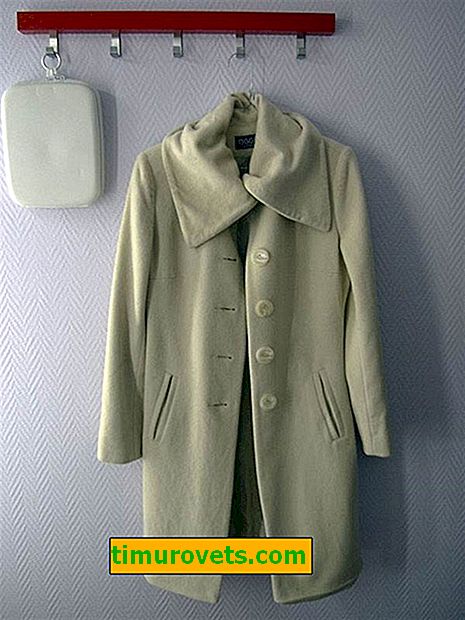Recently, not a single fashion show is complete without the use of fabrics with various patterns or, as professionals call them, prints.

There are so many of them that your eyes run wide! In a store, it can even be difficult to explain exactly which fabric is of interest. But you can not explain, but call the print by his own name. Let's figure out how this or that pattern is correctly called.
Types of geometric prints
Bright clothes and colorful geometric patterns help to create an unusual image. These include the following patterns:
- cell;
- strips;
- peas;
- rhombs.
Each of these groups includes several prints. Let's consider them more closely.
Cell
This type of print refers to the trends of 2019. Fashion designers love the cell, and fabric designers have created many variations of the cell.
Scotch (tartan)
This is a large pattern made in several shades. It got its name because it is traditional for the clothing (kilts and rugs) of the Scottish clans. Each clan had its own color. The most famous of them are several options.
Dress Gordon

Black Watch

Royal Steward

"Vichy"
A small two-tone cell in which one of the shades is white.

"Goose foot"
Drawing is also a kind of cell. It looks like a deformed small cell .

Dog tooth
The goose foot is easily confused with the dog tooth pattern. You can distinguish them by the size of the dark element : in the second version, it is much larger .

Pepita
And this print is similar to the previous pattern, but now in the element the corners of the rhombus are rounded . While in the "goose foot" they are straight.

Strips
This pattern is an alternation of stripes of different colors. In this case, the lines can run along the width, length of the canvas, diagonally or bend by a wave.
Marine
This is the name of the color, using a combination of blue and white lines .

Paradise
This is a combination of strips of different palettes.

Other geometric patterns
Combined strips, peas and squares.
"Christmas tree"
The pattern is formed when creating the fabric as a result of a special interweaving of threads.

Peas
The print is circles spread out over a plain field .

"Polka"
The pattern consists of alternating large and smaller peas arranged in a line .

"Pepper and Salt"
A chaotic arrangement of larger and smaller specks is used.

Rhombuses
As the name implies, the eponymous figure formed the basis of this type of print. The following varieties of this pattern exist:
- Harlequin With this design, the entire surface of the canvas is divided into white (sometimes black) and red rhombuses.

- Argyle. This motif, like a Scotch, hails from Scotland.

Over time, it began to be considered an aristocratic pattern and a sign of elegance.
Floral and floral prints
This type includes patterns based on flowers, buds, creepers, leaves and stems . Moreover, it can be both real plants and fictional images. There are several basic types of this print.
"Indian or Turkish cucumber" (paisley, buta)
The main element of the pattern resembles a drop. This figure is considered an oriental motif, but, according to some information, Scotland is also its homeland.

Reference. In Russian culture, this pattern is associated with the feather of a firebird or the plumage of a mystical female bird, Sirin.
Tropical
Image based on palm leaves and vibrant colors .

"Royal Lily"
The pattern appeared in France, where such a color could only be worn by the faces of the royal family .

Milfleur
A pattern of many small flowers, mostly mottled.

"Baroque"
Curl in the form of a diamond - shaped image of a flower and leaves .

Arabesque
Very similar to curls, but in this pattern there is no clear tracking of the pattern.

Animal prints
Such patterns mimic the skin or skin of a wild animal or reptile. There are three varieties of drawing.
Reptile skin
Reproduces the skin of a crocodile or snake (python, cobra) .

Predator Hide
Leopard, leopard, tiger, cheetah are also often used to create clothes with notes of extravagance.

Skins of other animals
Basically, a zebra, a cow, a giraffe take on a sample.

Attention! When choosing clothes of this color, it is best to complement it with plain objects of a muffled range. Otherwise, you risk getting too sharp, screaming outfit.
Other types of prints
There are several other types of prints that are difficult to combine with any group.
Abstraction
It is made in the form of a blurry, fuzzy pattern or pattern of broken lines.

Ombre
A popular color trend, reflected not only in clothing, but also in hairdressing.

In this embodiment, the borders between the colors are blurred.
Tai dai
The currently fashionable print, which is obtained by nodular staining of the fabric.

Ornament
Such a geometric image is most often used to decorate the edge of the product.

Meander
One of the varieties of ornament, which is found on ancient historical monuments. Consists of combinations of right angles created by one straight line.

Now you can correctly and accurately name the pattern and product that has become the most attractive for you.








